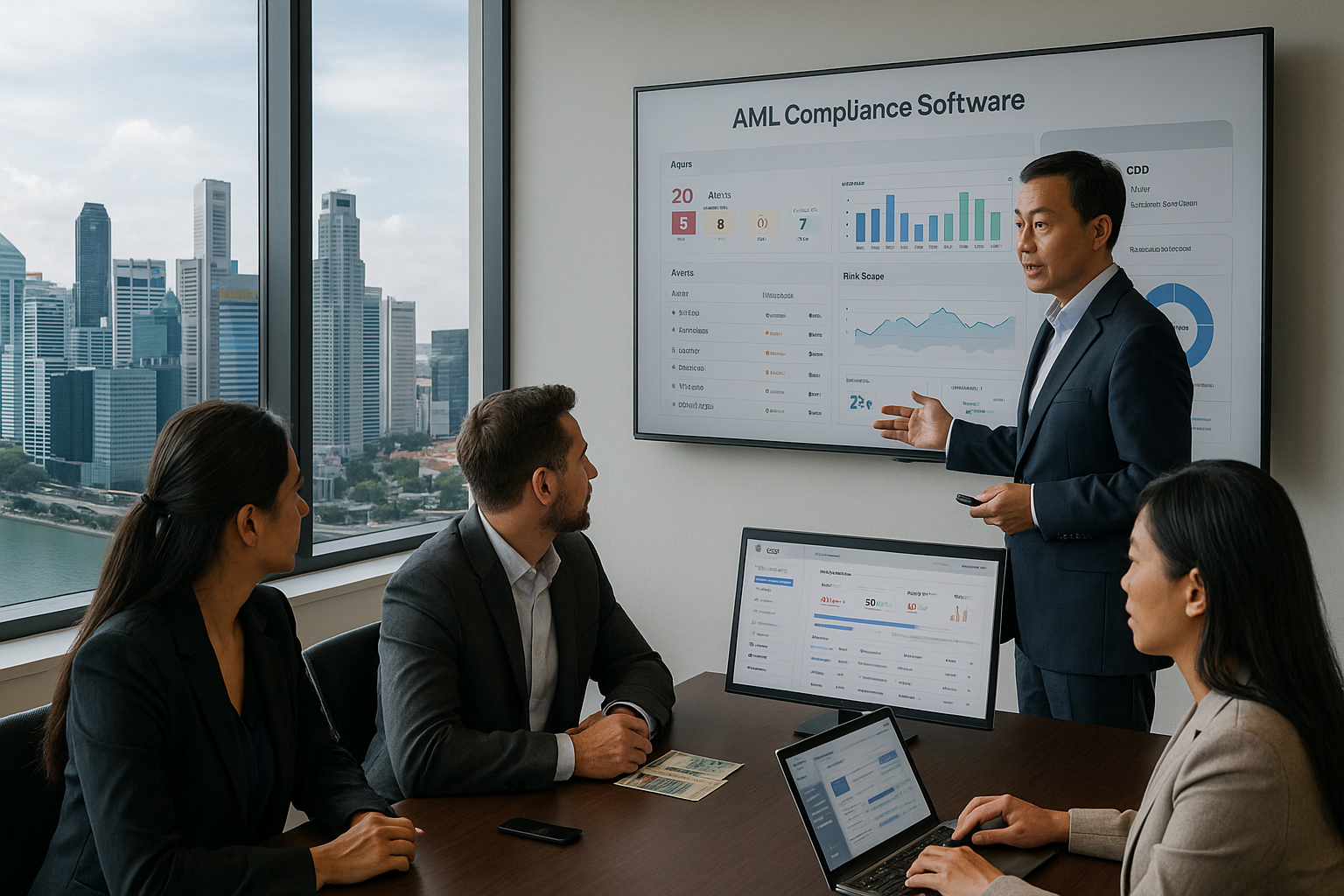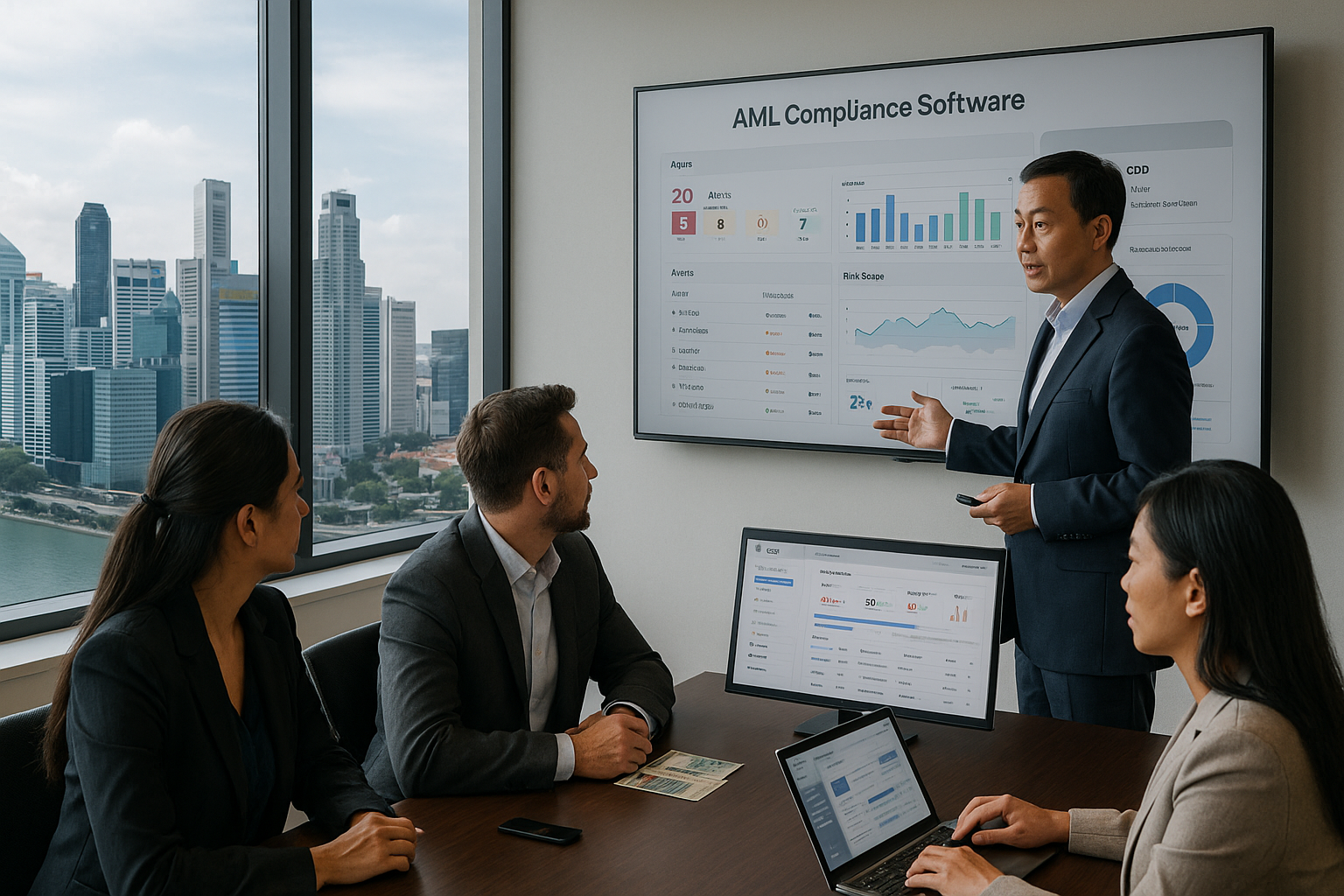AML Software in Australia: The 7 Big Questions Every Bank Should Be Asking in 2025
.svg)
Choosing AML software used to be a technical decision. In 2025, it has become one of the most strategic choices a bank can make.
Introduction
Australia’s financial sector is entering a defining moment. Instant payments, cross-border digital crime, APRA’s tightening expectations, AUSTRAC’s data scrutiny, and the rise of AI are forcing banks to rethink their entire compliance tech stack.
At the centre of this shift sits one critical question: what should AML software actually do in 2025?
This blog does not give you a shopping list or a vendor comparison.
Instead, it explores the seven big questions every Australian bank, neobank, and community-owned institution should be asking when evaluating AML software. These are the questions that uncover risk, expose limitations, and reveal whether a solution is built for the next decade, not the last.
Let’s get into them.

Question 1: Does the AML Software Understand Risk the Way Australia Defines It?
Most AML systems were designed with global rule sets that do not map neatly to Australian realities.
Australia has:
- Distinct PEP classifications
- Localised money mule typologies
- Syndicated fraud patterns unique to the region
- NPP-driven velocity in payment behaviour
- AUSTRAC expectations around ongoing due diligence
- APRA’s new focus on operational resilience
AML software must be calibrated to Australian behaviours, not anchored to American or European assumptions.
What to look for
- Localised risk models trained on Australian financial behaviour
- Models that recognise local account structures and payment patterns
- Typologies relevant to the region
- Adaptability to NPP and emerging scams affecting Australians
- Configurable rule logic for Australia’s regulatory environment
If software treats all markets the same, its risk understanding will always be one step behind Australian criminals.
Question 2: Can the Software Move at the Speed of NPP?
The New Payments Platform changed everything.
What used to be processed in hours is now settled in seconds.
This means:
- Risk scoring must be real time
- Monitoring must be continuous
- Alerts must be triggered instantly
- Investigators need immediate context, not post-fact analysis
Legacy systems built for batch processing simply cannot keep up with the velocity or volatility of NPP transactions.
What to look for
- True real-time screening and monitoring
- Sub-second scoring
- Architecture built for high-volume environments
- Scalability without performance drops
- Real-time alert triaging
If AML software cannot respond before a payment settles, it is already too late.
Question 3: Does the Software Reduce False Positives in a Meaningful Way?
Every vendor claims they reduce false positives.
The real question is how and by how much.
In Australia, many banks spend up to 80 percent of their AML effort investigating low-value alerts. This creates fatigue, delays, and inconsistent decisions.
Modern AML software must:
- Prioritise alerts based on true behavioural risk
- Provide contextual information alongside flags
- Reduce noise without reducing sensitivity
- Identify relationships, patterns, and anomalies that rules alone miss
What to look for
- Documented false positive reduction numbers
- Behavioural analytics that distinguish typical from atypical activity
- Human-in-the-loop learning
- Explainable scoring logic
- Tiered risk categorisation
False positives drain resources.
Reducing them responsibly is a competitive advantage.
Question 4: How Does the Software Support Investigator Decision-Making?
Analysts are the heart of AML operations.
Software should not just alert them. It should empower them.
The most advanced AML platforms are moving toward investigator-centric design, helping analysts work faster, more consistently, and with greater clarity.
What to look for
- Clear narratives attached to alerts
- Visual network link analysis
- Relationship mapping
- Easy access to KYC, transaction history, and behaviour insights
- Tools that surface relevant context without manual digging
If AML software only generates alerts but does not explain them, it is not modern software. It is a data dump.

Question 5: Is the AML Software Explainable Enough for AUSTRAC?
AUSTRAC’s reviews increasingly require banks to justify their risk models and demonstrate why a decision was made.
AML software must show:
- Why an alert was generated
- What data was used
- What behavioural markers contributed
- How the system ranked or prioritised risk
- How changes over time affected decision logic
Explainability is now a regulatory requirement, not a bonus feature.
What to look for
- Decision logs
- Visual explanations
- Feature attribution for risk scoring
- Scenario narratives
- Governance dashboards
Opaque systems that cannot justify their reasoning leave institutions vulnerable during audits.
Question 6: How Well Does the AML Software Align With APRA’s CPS 230 Expectations?
Operational resilience is now a board-level mandate.
AML software sits inside the cluster of critical systems APRA expects institutions to govern closely.
This includes:
- Third-party risk oversight
- Business continuity
- Incident management
- Data quality controls
- Outsourcing governance
AML software is no longer evaluated only by compliance teams.
It must satisfy risk, technology, audit, and resilience requirements too.
What to look for
- Strong uptime track record
- Clear incident response procedures
- Transparent service level reporting
- Secure and compliant hosting
- Tested business continuity measures
- Clear vendor accountability and control frameworks
If AML software cannot meet CPS 230 expectations, it cannot meet modern banking expectations.
Question 7: Will the Software Still Be Relevant Five Years From Now?
This is the question few institutions ask, but the one that matters most.
AML software is not a one-year decision. It is a multi-year partnership.
To future-proof compliance, banks must look beyond features and evaluate adaptability.
What to look for
- A roadmap that includes new crime types
- AI models that learn responsibly
- Agentic support tools that help investigators
- Continuous updates without major uplift projects
- Collaborative intelligence capabilities
- Strong alignment with emerging AML trends in Australia
This is where vendors differentiate themselves.
Some provide tools.
A few provide evolution.
A Fresh Look at Tookitaki
Tookitaki has emerged as a preferred AML technology partner among several banks across Asia-Pacific, including institutions in Australia, because it focuses less on building features and more on building confidence.
Confidence that alerts are meaningful.
Confidence that the system is explainable.
Confidence that operations remain stable.
Confidence that investigators have support.
Confidence that intelligence keeps evolving.
Rather than positioning AML as a fixed set of rules, Tookitaki approaches it as a learning discipline.
Its platform, FinCense, helps Australian institutions strengthen:
- Real time monitoring capability
- Consistency in analyst decisions
- Model transparency for AUSTRAC
- Operational resilience for APRA expectations
- Adaptability to emerging typologies
- Scalability for both large and community institutions like Regional Australia Bank
This is AML software designed not only to detect crime, but to grow with the institution.
Conclusion
AML software in Australia is at a crossroads.
The era of legacy rules, static scenarios, and batch processing is ending.
Banks now face a new set of expectations driven by speed, transparency, resilience, and intelligence.
The seven questions in this guide cut through the noise. They help institutions evaluate AML software not as a product, but as a long-term strategic partner for risk management.
Australia’s financial sector is changing quickly.
The right AML software will help banks move confidently into that future.
The wrong one will hold them back.
Pro tip: The strongest AML systems are not just built on good software. They are built on systems that understand the world they operate in, and evolve alongside it.
Experience the most intelligent AML and fraud prevention platform
Experience the most intelligent AML and fraud prevention platform
Experience the most intelligent AML and fraud prevention platform
Top AML Scenarios in ASEAN

The Role of AML Software in Compliance

The Role of AML Software in Compliance









